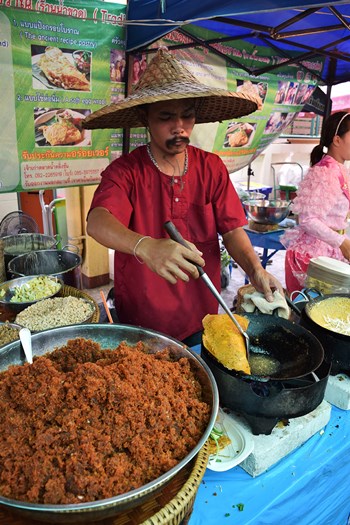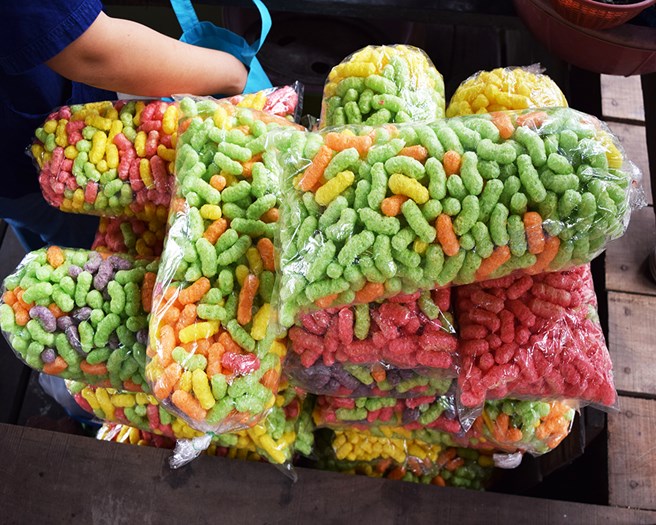BANGKOK - The steel- hulled long-tail boat slams violently against some unusually high waves churned up in the Chao Phraya River by a far-off typhoon. I brace myself as the captain signals he’s about to veer hard left and abandon our original course. He aims his arrow-straight boat at a small canal leading off the river and soon we are floating on calmer waters.
“These are the klongs (canals) I was telling you about,” says the captain as we enter Mon klong, one of the man-made canals located in Bangkok’s western Thonburi district, which until 1972 was an independent province.
“We’ll go to the floating market this way - it will take us longer to get there but the river is too rough today,” says the man who picked me up at the legendary Oriental dock, where the world-renowned Mandarin Oriental Hotel is located.
There were once many canals running of the Chao Phraya River but just a handful remain. In fact, when Westerners first arrived in Thailand, they dubbed Bangkok the “Venice of the East” because there were so many canals. However, Bangkok’s klongs are more Amsterdam-like in their appearance, in my opinion.
The klongs are lined with lots of old wooden-stilted shacks which look like they could fall into the water at any minute, small wats (temples) and some ramshackle warehouses. This is Old Bangkok at its grittiest and one that the tourists zipping past us in other brightly decorated long-tail boats seem to be totally enjoying.
The captain turns tour guide and tells me “Mon Klong is the oldest” of the canals and then says we’ll also be travelling on Klong-Saen-Saeb later.
The klongs are a great place to see locals going through their daily routines - we see women washing clothes in the river, workmen using there brute strength to pile drive pillars into the river bank and women in small boats selling souvenirs to the tourists. I buy a wooden elephant from one seller and the captain is rewarded with a free juice for bringing her a customer.
We drift past the Royal Barges National Museum where crafts made of real gold and decorated with rare gems are on display - the crafts have been used by Thailand’s revered royal family over the centuries.
Thailand’s naval academy and some naval installations are also located along the klongs - they were placed away from the river for security reasons.


Left: Heavy motor makes boat hard to stir. Right: Vendor cooks up fresh fish at the floating market.
As we turn a corner, the captain slows his long-tail craft to a crawl and points to a wall where an alligator-sized lizard is sunbathing.
“We won’t disturb him,” says the captain, who guns his mighty engine and we quickly leave the area.
According to the captain, the word “klong” is also used by the Thai people to describe a river. He says the canals around Bangkok were filled in because of the risk of cholera back at the turn of the early 20th century.
“Klong Bangkok Noi is the largest - it’s more like a river than a canal but it was manmade as well,” the captain says.
The only klong left in central Bangkok is Klong Saen Saeb, which is still used for public boat transportation so residents can avoid the capital’s traffic-clogged streets.


Above: There are lots of Thai treats waiting for tourists at the floating market.
While the Chao Phraya River remains a vital trade route - it’s always filled with massive barges - the klongs are no longer used for commerce - “only tourists use them now,” says the captain as the floating market comes into view.
The captain drops me off and orders me to be back at the dock in 45 minutes.
Spicy smells fill the air around the floating market as men and women cook satays and freshly caught-fish on red-hot grills in their small boats before passing them up to customers eagerly waiting to sample them.
Stalls at the back of the market sell other delicacies like Pad Thai, fresh fruits and vegetables and lots of sweet treats.
A festive mood hangs over the market as tourists and locals mingle and snap lots of photographs of the boats filled with colourful ingredients and their brightly-decorated occupants, who flash lots of smiles.
Not much has changed along the klongs over the centuries and that’s a good thing because, thanks to them, visitors can see the “real” Bangkok.
Information
The easiest way to get to Bangkok from Canada is with Cathay Pacific via Hong Kong. / Tour East Holidays offers many tours of Thailand and other Asian destinations. Go to
www.toureast.com / Add a few days to your Thailand visit and travel to Chiang Mai, the old imperial capital, and Phuket, the sun and fun capital of Thailand. / Canadians do not need a visa. / A private two hour klong tour on a long-tail boat costs about $80 (Cdn). Group tours cost around $25 per person. Hotels can arrange tours and the long-tail boats will pick you up at a designated dock. / The Mandarin Oriental Hotel celebrated its 140th anniversary in 2016 and as part of their celebrations have completely renovated the historic Garden Wing and Author’s Lounge where some of the greatest writers in history have spent the night over the centuries - Rudyard Kipling, Graham Greene, Barbara Courtland and Summset Maugn among them. Go to
www.mandarinoriental.com to find out mote about the Bangkok property.
About the Author
Marc Atchison is a veteran journalist and a seasoned traveller with more than 20 years of travel writing experience. As the former Travel Editor of the Toronto Star, Canada's largest newspaper, and now Editor-in-Chief and Senior Writer for TraveLife magazine (Canada) and travelife.ca, Marc has been to over 100 countries in the world. Japan is one of his favorite destinations and he's been there on numerous occasions.